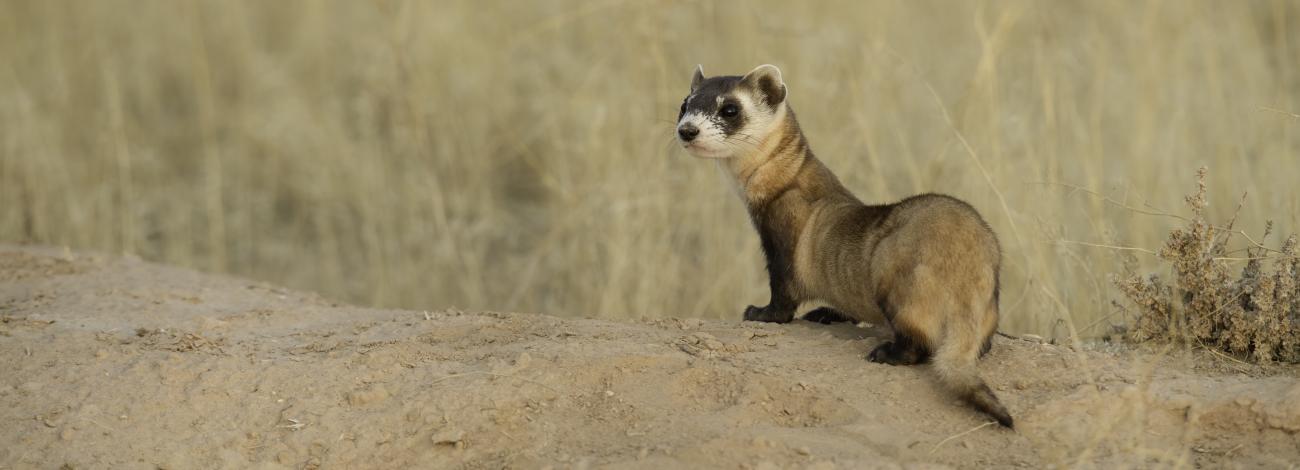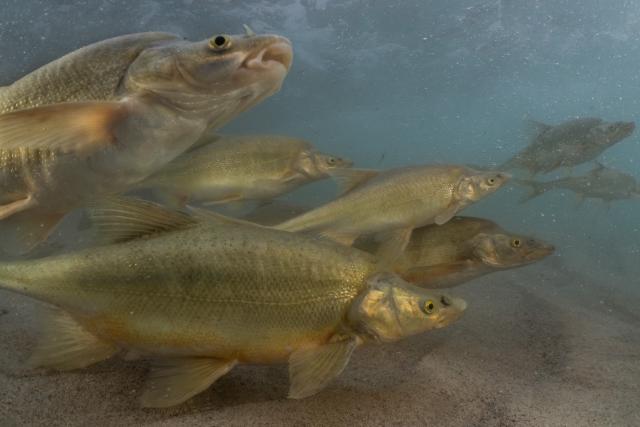
BLM Threatened and Endangered Species Program partners
Management and recovery of special status species is difficult and challenging work, requiring substantial time, resources, dedication, and partnerships. BLM works with Federal, state, Tribal, non-governmental partners, industry, private landowners, and the public to make a difference for many species by minimizing potential impacts and proactively identifying, conserving, and restoring important habitats.
Working together with partners is important for building effective relationships and improving the BLM’s outcomes for conservation success. By combining efforts, partnerships allow the BLM to share staff resources, funding, and technical and Indigenous Knowledge to address the conservation management needs of special status species and their habitats.
Prior to a species becoming listed under the Endangered Species Act, BLM works with partners to develop and implement conservation efforts to improve populations and habitats. Conservation successes with partners can help avoid the need for listing as a threatened or endangered species.
If a species is listed as threatened or endangered under the Endangered Species Act, the BLM participates in developing recovery plans with the U.S. Fish and Wildlife Service and National Marine Fisheries Service. The BLM provides technical, financial, and in-kind services for conservation and recovery efforts.
The BLM coordinates closely with the following agencies and organizations to conserve special status species on public lands:
Our Partners
- US Department of the Interior
-
Bureau of Indian Affairs: The Bureau of Indian Affairs’ mission is to enhance the quality of life, to promote economic opportunity, and to carry out the responsibility to protect and improve the trust assets of American Indians, Indian tribes and Alaska Natives. Learn more about their Natural Resources Program.
National Park Service: . Preserves unimpaired the natural and cultural resources and values of the National Park System for the enjoyment, education, and inspiration of this and future generations. Explore the NPS Natural Resources Stewardship and Science Page.
U.S. Fish and Wildlife Service: . The mission of the U.S. Fish and Wildlife Service is working with others to conserve, protect, and enhance fish, wildlife, plants, and their habitats for the continuing benefit of the American people.
U.S. Geological Survey: Predicts current and evolving Earth-system interactions and delivers actionable information at scales and timeframes relevant to decision makers. Explore the USGS Biology page.
- US Department of Agriculture
-
Natural Resources Conservation Service: Delivers conservation solutions so agricultural producers can protect natural resources and feed a growing world. Learn more about the Working Lands for Wildlife initiative.
U.S. Forest Service: The mission of the Forest Service is to sustain the health, diversity, and productivity of the nation’s forests and grasslands to meet the needs of present and future generations. Explore their Fish, Wildlife, and Plants page.
- Other Federal Partners
-
Department of Defense Threatened, Endangered, and At-Risk Species: The Department of Defense’s (DoD) Natural Resources Program (NR Program) supports the protection and conservation of all threatened, endangered, and at-risk species found on military installations. This site will provide you with numerous resources about these species and ways to promote their status.
National Oceanic and Atmospheric Administration Fisheries (also known as NMFS): NOAA NMFS is responsible for the stewardship of the nation's ocean resources and their habitat. Explore their Endangered Species Conservation page.
- Other Non-Federal Partners
-
Association of Fish and Wildlife Agencies: To advocate for the roles, responsibilities, and authorities of our member agencies to manage fish and wildlife as public trust resources for current and future generations.
National Fish and Wildlife Foundation: The National Fish and Wildlife Foundation (NFWF) is dedicated to sustaining, restoring, and enhancing the nation’s fish, wildlife, plants, and habitats for current and future generations.
NatureServe: We leverage the power of science, data, and technology to guide biodiversity conservation and stewardship.
NatureServe Explorer: The definitive source of information for rare and endangered species and ecosystems in North America. Through interactive maps and place-based reporting, Explorer allows the public to explore where at-risk species have been documented, including through Element Occurrence and observation data, and where they may occur based on habitat models.
Native American Fish & Wildlife Society (NAFWS) is a national tribal organization established informally during the early 1980's. NAFWS was incorporated in 1983 to develop a national communications network for the exchange of information and management techniques related to self-determined tribal fish and wildlife management.
Western Association of Fish and Wildlife Agencies: Since 1922, WAFWA’s goal has been to support sound resource management and build partnerships to conserve wildlife for the use and benefit of all citizens, now and in the future.
Threatened and endangered species information
USFWS Information for Planning Conservation (IPaC): IPaC is a project planning tool that streamlines the USFWS environmental review process
USFWS Environmental Conservation Online System (ECOS): ECOS serves a variety of reports related to USFWS Threatened and Endangered Species.
Endangered Species Act Streamlining: The streamlining initiative strives to make consultations more efficient as a required regulatory process and effective in conserving plants and animals protected by the Endangered Species Act.

